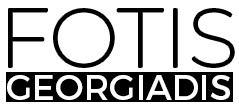Makers of The Metaverse: Erin McDannald Of Lighting Environments On The Future Of The VR, AR & Mixed Reality Industries
An Interview With Fotis Georgiadis
Optimism: Embrace the most exciting parts of the learning and development process. Keep sight of your mission and lean into that motivation when you need it most. Set your eyes on what’s possible for the future of your industry, and don’t be afraid to make even bigger goals.
The Virtual Reality, Augmented Reality & Mixed Reality Industries are so exciting. What is coming around the corner? How will these improve our lives? What are the concerns we should keep an eye out for? Aside from entertainment, how can VR or AR help work or other parts of life? To address this, we had the pleasure of interviewing Erin McDannald.
Erin McDannald, CEO and co-owner of Lighting Environments and its sister company, Environments, has been guiding clients throughout the entire lighting design and construction process for over two decades. Now a pioneer for IoT integration and building and workplace management, McDannald is leading today’s workforce through powerful digital transformation with Environments’ Workplace of the Future solution. Environments is elevating physical spaces to allow for cutting-edge interaction and collaboration within the digital twin, metaverse, and beyond.
Thank you so much for doing this with us! Before we dig in, our readers would like to get to know you a bit. Can you tell us a bit about your backstory and how you grew up?
Growing up, I was never a big fan of the structures of school, but my inquisitive nature led me to seek knowledge all around me. This made me realize that the world is small enough that anyone can make an impact as long as you ask questions and you’re not afraid to break the mold. I attended the University of Wisconsin where I received my interior design degree. However, when I graduated, I realized that path didn’t quite fit me, so I pivoted more to the business side of the industry.
For many years, I worked with architecture and interior design firms across the country to sell lighting solutions. Throughout this journey, I became passionate about learning how to communicate with electronics and lighting and tailor them to any circumstance and environment. I eventually realized that once you can do that, you can apply it to other aspects of design.
My father was an architect, which sparked my interest in the architecture and design space from an early age. He was a creative and inventive person, qualities that I admired and that he luckily passed along to me. I’ve always had a “sky’s the limit” mentality, which helped me when I was faced with the possibility of starting my own business — something that I never expected to do, but am so happy I was open to the possibility!
The pandemic caused a widespread disconnect among classrooms and businesses who were suddenly working from home for the first time. This brought about the need to connect to coworkers and schoolmates as seamlessly as if they were sitting right next to them, for the sake of both productivity and happiness. This, coupled with the experiences with my daughter, whose illness left her isolated, inspired the creation of Environments.
Is there a particular book, film, or podcast that made a significant impact on you? Can you share a story or explain why it resonated with you so much?
Thank You for Being Late — Thomas Friedman.
This book helped me understand why things are the way they are, clarified human motivation, and explained how real humans react to technology. The book asserted that Mother Nature is the most sustainable environment. One thing that is consistent on this planet is evolution, and Mother Nature has always adapted to those changes. The same could be applied to technology in the modern era, as it isn’t going away, it’s only going to evolve. This past May, I had the pleasure of participating in The New York Times’ Debate at the World Economic Forum in Davos, where I got to argue against the metaverse being an “opium of the people’’ in the making. Thomas Friedman was the moderator, and it was great interacting with him in person.
Is there a particular story that inspired you to pursue a career in the X Reality industry? We’d love to hear it.
My journey to Environments was inspired in part by my experiences with my daughter, whose illness left her disconnected from her friends and classmates. I saw the need in real-time for her to digitally connect with her teachers and classmates, but also to create a space that she would be safe in. On a larger scale, I saw that this applied to the workplace — both during the pandemic and beyond. When in the physical office, occupants should feel comfortable, safe, and confident that they are breathing clean air, drinking clean water, working on disinfected surfaces, etc. And when they are out of the office, they should be able to connect with their coworkers as seamlessly as if they were right next to them, for the sake of both productivity and happiness. And so, the idea for Environments was born.
I believe over the next ten years, companies who choose to integrate the metaverse, embracing its value, will see great success. With the societal changes brought on by COVID-19, many workers realized they don’t need to be solely dependent on the physical workplace anymore.
The metaverse is being increasingly adopted in the workplace, but will continue to evolve over the next decade. Because the metaverse is relatively new to employees, businesses are having their virtual office completely mirror their physical office to make it more familiar and to get more buy-in from employees who may have initial skepticism. This allows employees and leaders to not only see what’s happening in their offices but communicate with those in-person or working from home. Looking ahead to 2030, mimicking the “real” office won’t be necessary because people will have already adjusted to the metaverse. The metaverse office will be seen as an extension of the physical office and will be its own environment, eventually eliminating the need for a digital twin.
With Environments, I’ve made it my mission to create healthy and human-centric spaces that operate with intuitive compassion to keep people well, and I’m excited about the potential next-gen technology can offer to achieve that.
Can you share the most interesting story that happened to you since you began this fascinating career?
The most interesting thing that has happened to me since beginning my career in technology is getting to participate in The New York Times 2022 World Economic Forum debate, arguing against the metaverse being the “opium of the masses” in the making. It was quite fun getting to discuss the science behind human touch and how important it is when it comes to stimulating the production of the body’s natural opiate receptors. I loved getting to meet other leaders in the space as well.
Can you share a story about the funniest mistake you made when you were first starting? Can you tell us what lesson you learned from that?
When renovating our office, we decided the best way to understand the market was to upgrade the control system ourselves. We purposefully ordered a control system we didn’t have experience with, and didn’t know how to program. Now that was a learning experience. We learned how to manipulate firmware on electronics, how to write our own software, and what it took to successfully tie it into our other building systems, creating a seamless digital system in the universe that can mimic the actions of the metaverse. We gained a new perspective on what our clients go through and we are so grateful to see integration through a new lens.
None of us are able to achieve success without some help along the way. Is there a particular person who you are grateful towards who helped get you to where you are? Can you share a story about that?
My grandfather Russell set a wonderful example and, in many ways, set the trajectory for my career and business. A commercial duck farmer, he taught me so much about leadership and ethics. My grandfather lived with so much passion for his craft, traveling often to Hong Kong to study the best duck-farming practices. He was truly a leader ahead of his time, and I am thankful for the example he set.
Are you working on any exciting new projects now? How do you think that will help people?
Environments is on the precipice of launching a metaverse offering where companies of all kinds will be able to better communicate and collaborate. This will be a holistic toolkit that will create better outcomes for business, people, and the planet.
Integrating the metaverse into a company’s infrastructure streamlines employees’ ability to stay connected without having to step foot inside the building unless they want to. Now, workers may choose to work from the office, work from home, or work in the metaverse, working remotely but still maintaining the physical and interpersonal sense of an office. The metaverse creates an inclusive environment where employees of all needs and work styles can equally interact at the workplace, wherever that may be.
When in the physical office, occupants should feel comfortable, safe, and confident that they are breathing clean air, drinking clean water, working on disinfected surfaces, etc. And when they are out of the office, they should be able to connect with their coworkers as seamlessly as if they were right next to them, for the sake of both productivity and happiness.
Amid the pandemic, many companies thought the physical office might be a place of the past, but the hybrid workplace is being solidified as the work style of the future. While the future is not certain, one thing is: there will be an office for many businesses, especially given the advent of the metaverse.
At Environments, we always implement and interact with technology ourselves before promoting it to our customers. This is a really exciting way for our teams to test new technologies and abilities, then offer the best of the best to our clients. It’s important to us that as a tech company, we’re confident in our offerings. As such, the onus is on us to troubleshoot and identify ways in which we can improve how we interact with the metaverse.
Ok super. Thank you for all that. Let’s now shift to the main focus of our interview. The VR, AR and MR industries seem so exciting right now. What are the 3 things in particular that most excite you about the industry? Can you explain or give an example?
- Workplace of the Future: The metaverse in the workplace allows employees and leaders to not only see what’s happening in their offices but enjoy genuine interactions with one another regardless of physical locations or limitations. We think the metaverse has the potential to eventually replace video conferencing and perhaps even internal emails and chats.
- Evolution of the Design Showroom: Lighting and design product companies now have more ways to optimize how they show off samples. Sales teams can present products to potential clients all from their laptops on the metaverse. This will not only save money on production for sales samples, but also really optimize showing how the product could potentially be seen or used in the desired space.
- Merging Digital and Physical Environments: Our ultimate goal with the metaverse is to offer a solution that intuitively connects and blends digital and physical worlds. We are designing ways to bring metaverse assets and connections right into physical spaces for a seamless way to work, from analytics and controls to interpersonal interactions.
What are the 3 things that concern you about the VR, AR and MR industries? Can you explain? What can be done to address those concerns?
- Privacy: There are concerns that the metaverse in a work environment opens employees up to constant scrutiny from leadership. This isn’t the case if business leaders cultivate an environment that makes employees feel safe and supported. Once the culture is put into place, employees feel more comfortable operating as normal. Employee information should be and can be kept safely within their current working organization, reserved only for appropriate and fair use. The metaverse is capable of marrying privacy and cutting-edge functionality, catering still to every business’ needs.
- Security: When people think of the metaverse, they think about an open, expansive place that completely mimics the “real” world, but it’s not explicitly the same, especially in a workplace context. That being said, companies do need to keep biomarkers and personal identifiable information anonymous and enlist access policies, geofencing, VPNs and two factor authentication to ensure that their virtual work environment is secure. Companies should already have a dedicated person or team with security at the top of their mind. If not, a security and privacy expert would be a great addition to any company considering or designing a metaverse environment.
- Cultivating buy-in from employees: Remote work can create isolation between teams. This inherent siloed structure has resulted in a decrease of information sharing between groups, leading to less innovation and more confusion. A successful experience with the metaverse begins with a healthy relationship and trust between employers and employees. While some employees may be hesitant to adopt the metaverse at first, it’s important companies develop transparent and informational training sessions to gain the buy-in that is so important for this technology.
I think the entertainment aspects of VR, AR and MR are apparent. Can you share with our readers how these industries can help us at work?
As we approach year three of the hybrid work era, one obstacle is still present: the lack of collaboration and mentorship. If the office is good for one thing, it’s having easy access to co-workers to talk about ideas or challenges a worker is facing. Environments calculated that the pandemic cost them 10% in lost ability to collaborate during the pandemic. To solve this challenge, Environments is in the process of onboarding their team into the metaverse. I believe the return on investment onboarding team members will pay for itself in less than a year, without employees having to return to the office. By using the metaverse to increase collaboration and will lead to higher happiness and productivity.
The metaverse also allows for increased employee engagement, ease of communication, time for post- and pre-meeting decompression, and a more immersive work culture (without being too immersed).
The need for the physical office will never go away, but a digital alternative to video conferencing via the metaverse is necessary. A physical component, a digital component, and a backbone powered by analytics are all components needed in the future of the workplace.
Are there other ways that VR, AR and MR can improve our lives? Can you explain?
- Healthcare: Nurses and patients could better track where doctors are in their rounds and identify where in a hospital their much-needed equipment may be located. More sophisticated technology can allow for even more healthcare workers to work remotely and conduct more successful telehealth appointments.
- Retail: Retail stores could use heat mapping technology to show company leadership which sections of their stores have the most foot traffic. For example, a store could utilize this technology to determine that men’s accessories has the most traffic in the store, and men’s shoes has the least. The technology then alerts the business to investigate the underperformance of the men’s shoes department and make adjustments to improve shopper experience.
- Education: A metaverse-enabled educational environment not only enables students with different needs to learn the same material from anywhere, but it also offers the opportunity for an immersive learning experience. Think The Magic School Bus coming to life; the opportunities are endless when it comes to the hands-on learning capabilities the metaverse brings to education.
What are the “myths” that you would like to dispel about working in your industry? Can you explain what you mean?
The metaverse isn’t just a flashy technology. It can truly help people and affect lives in a positive way. Many people associate the metaverse with the use of AR/VR technology, but headsets and glasses aren’t essential to the full metaverse experience, especially in workplace settings.

What are your “5 Things You Need To Create A Highly Successful Career In The VR, AR or MR Industries?”
There are many important elements and building blocks for a successful career in these industries, but a few are crucial:
- Persistence: As these industries grow, develop, and pave new possibilities, our companies must be prepared and willing to do the same. Those in the industry must be ready to come back stronger after every lesson or hurdle.
- Optimism: Embrace the most exciting parts of the learning and development process. Keep sight of your mission and lean into that motivation when you need it most. Set your eyes on what’s possible for the future of your industry, and don’t be afraid to make even bigger goals.
- Feedback: While developing a solution or cultivating a career in the VR, AR, or MR industries, remember to seek new perspectives and information. Feedback from within and outside of your immediate team will help you to learn, adjust, and find new opportunities to deliver the best results.
- Supportive and Flexible: Your infrastructure is a crucial part of your trajectory. Understand that while harnessing your existing infrastructure is essential, you may need to hire vendors and personnel to help with things like programming.
- Optimization: Ensure that your product or solution can be optimized for several different sectors. Aim to optimize income from accounting all the way to marketing, touching every section of a business balance sheet.
You are a person of great influence. If you could inspire a movement that would bring the most amount of good to the most amount of people, what would that be? You never know what your idea can trigger. 🙂
With the ability to share the physical office with remote workers, the metaverse is becoming a valuable tool for businesses to connect all employees and increase collaboration, accessibility, and communication. The most competitive offices of the future will feature well-connected digital and physical assets. That being said, I would inspire a movement to create a “responsible” metaverse. Science dictates that touch has been shown to stimulate the production of the body’s natural opiate receptors and cause the brain to release oxytocin. Recent evidence indicates that dysfunction of the oxytocin system could underlie the pathogenesis of heart disease and diabetes. With this in mind, a fully immersive, all-consuming metaverse could potentially be detrimental to the human race. This is why it’s vital that business leaders approach the metaverse from a scientific, compassionate standpoint. I am passionate about approaching the metaverse in a humane, socially sustainable way, while exploring what the workplace of the future will look like and how the metaverse could contribute to a healthier work/life balance.
We are very blessed that very prominent leaders read this column. Is there a person in the world, or in the US with whom you would like to have a private breakfast or lunch, and why? He or she might just see this if we tag them 🙂
Melinda Gates. I am forever inspired by her initiative and her mission to prove that women indeed have a seat at the tech industry’s table. She truly believes in designing a better world for tomorrow, and her example has guided much of my own decision-making as Environments moves forward with our software.
Thank you so much for these excellent stories and insights. We wish you continued success on your great work!
Makers of The Metaverse: Erin McDannald Of Lighting Environments On The Future Of The VR, AR &… was originally published in Authority Magazine on Medium, where people are continuing the conversation by highlighting and responding to this story.



